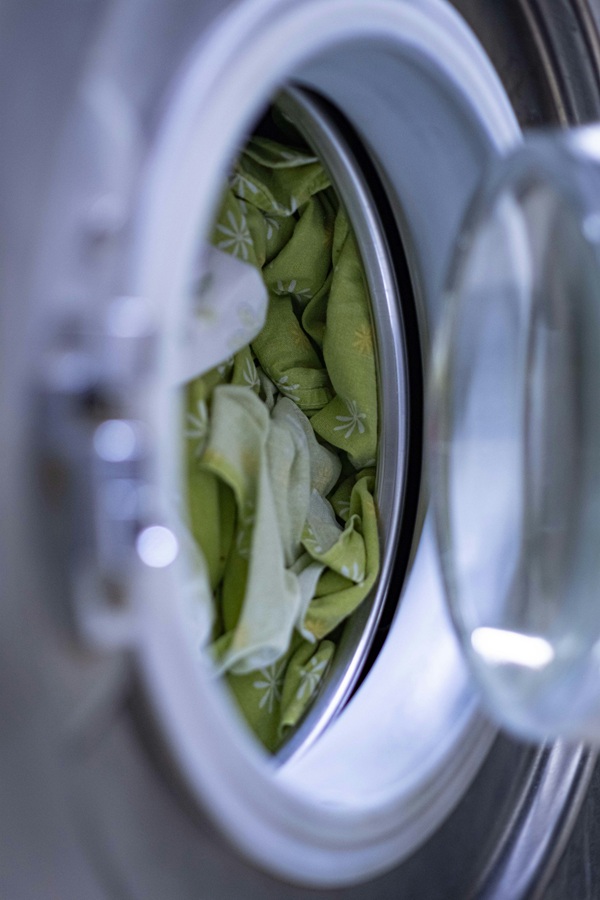Laundry day was supposed to be simple. Load clothes, add detergent, press start, walk away. Instead, you’re standing in your laundry room listening to sounds that definitely weren’t in the owner’s manual.
Welcome to the reality of washing machine ownership – where mysterious puddles appear overnight and your once-reliable appliance suddenly develops a personality disorder. According to data from over 20,000 Angi customers, 21% of homeowners who request appliance service have a washer that doesn’t work at all. But here’s the good news: many washer problems are more manageable than they first appear.
The Spin Cycle That Won’t Spin
Nothing frustrates quite like opening your washer to find clothes swimming in soapy water after what should have been a complete cycle. When your washer won’t spin, it’s usually trying to tell you something specific.
Load balance issues cause most spinning problems. Modern washers have sensors that detect uneven loads and refuse to spin when things get lopsided. One heavy towel paired with lightweight items creates enough imbalance to trigger safety shutoffs.
Drive belt problems present another common culprit. When belts stretch, crack, or break completely, the drum loses its connection to the motor. You’ll hear the motor running but see no drum movement. Some machines even emit a burning rubber smell when belts slip under stress.
Lid switch failures stop top-loading washers dead in their tracks. These safety switches prevent spinning when the lid is open, but they can malfunction and think the lid is up even when it’s securely closed.
David Asunbo, a technician with Niyalu Repair Service who has over 16 years of appliance repair experience, identifies spinning problems as one of his most frequent calls: “I go through this every single week and the most common problems with washers are not draining, not spinning, making loud noises, and water not coming in.”
Load Balance Issues vs Mechanical Failures
Smart washers have sophisticated balance detection systems, but they can be overly sensitive. Try redistributing clothes manually and restarting the cycle. If the problem persists, you’re probably looking at mechanical issues rather than simple load problems.
Mechanical spinning failures often require professional attention. Drive motor problems, transmission issues, or control board malfunctions all prevent proper spinning and typically cost $200-600 to repair depending on the specific component.
Water Drama – Too Much, Too Little, or Wrong Temperature
Water-related problems range from obvious floods to subtle temperature issues that ruin your favorite clothes. Each symptom points to different underlying causes.
Overfilling usually indicates faulty water level sensors or stuck inlet valves. When these components malfunction, your washer doesn’t know when to stop filling, potentially overflowing onto your laundry room floor.
Insufficient water often stems from clogged inlet screens or failed water pumps. Low water levels prevent proper cleaning and can damage pump mechanisms that expect adequate water volume to function correctly.
Temperature problems frequently relate to crossed supply lines or defective mixing valves. Hot water coming out during cold cycles can shrink clothes, while cold water in hot cycles prevents proper cleaning and sanitization.
Professional diagnosis becomes crucial for water issues because multiple components interact to control water flow, temperature, and volume. Consumer Reports data shows that water drainage problems have a median repair cost of $195, while control panel issues average $173.
For complex water-related problems requiring expert attention, reliable Washer Repairs Calgary technicians can quickly identify whether you’re dealing with simple blockages or more serious component failures.
Mysterious Vibrations That Shake Your House
Excessive washing machine vibration isn’t just annoying – it’s destructive. Unchecked vibration damages both your washer and your home’s structure over time.
Leveling problems cause most vibration issues. Washing machines must sit perfectly level to operate properly. Even slight tilts create unbalanced loads that grow progressively worse during spin cycles.
Worn shock absorbers allow the drum to move too freely during operation. Most washers have two to four shock absorbers that dampen drum movement. When these wear out, vibration increases dramatically.
Loose components throughout the machine can rattle and amplify normal operational vibrations. Everything from mounting bolts to internal brackets can work loose over time, especially in heavily-used machines.
When Your Neighbors Start Complaining

Severe vibration problems become neighborhood issues in apartments and attached homes. What feels like minor shaking to you can translate to wall-pounding disturbances for adjacent units.
Professional technicians know to check multiple vibration sources simultaneously. As appliance repair expert Matthew Morrison explains: “Two of the most common issues are siphoning of the drain hose, which pulls water out as it’s filling, and making sure the unit is level, front to back and side to side with an actual level.”
Shock absorber replacement typically costs $150-300 and should always be done in pairs or complete sets. Installing just one new shock while leaving old ones creates new imbalance problems.
Smart Troubleshooting Before Calling the Pros
Modern washers include diagnostic features that can save you service calls and money. Learning to use these tools effectively helps distinguish between simple fixes and serious problems.
Error codes provide specific information about detected problems. Most machines display these codes on digital panels or through blinking light patterns. Consult your owner’s manual to decode what your washer is trying to tell you.
Self-diagnostic cycles walk you through systematic testing of major components. Newer machines can run these diagnostics automatically and report results through digital displays or smartphone apps.
WiFi-enabled diagnostics allow some washers to transmit detailed problem reports directly to service technicians. This technology enables remote diagnosis and can help technicians arrive with appropriate parts already in hand.
Senior technician Timur Bai notes an important troubleshooting insight: “Some modern washing machine issues are counterintuitive. For example, when the washer is not starting at all, people tend to think about a bad control board, door lock or motor issue. But it usually is something as simple as a clogged drain pump.”
Basic troubleshooting steps include:
- Checking power connections and circuit breakers
- Examining water supply connections for kinks or clogs
- Ensuring proper load distribution and door/lid closure
- Running diagnostic cycles if available
- Consulting manufacturer’s troubleshooting guides
Knowing When DIY Becomes Dangerous
Some washing machine repairs are perfect DIY projects. Others can be dangerous or make problems worse. Understanding this distinction protects both your safety and your wallet.
Safe DIY repairs include cleaning lint filters, adjusting leveling feet, redistributing unbalanced loads, and replacing simple door seals or hoses. These tasks require basic tools and don’t involve electrical or major mechanical work.
Professional-only repairs involve electrical components, sealed system work, or major mechanical disassembly. Motor replacements, control board repairs, and transmission work require specialized knowledge and tools.
Safety considerations make some repairs inherently risky for homeowners. Washing machines combine water and electricity – a potentially lethal combination. Additionally, the heavy drums and mechanical systems can cause serious injury if handled improperly.
Most washing machines last 8-13 years with proper maintenance. Repair costs typically range from $150-500, making the repair-versus-replace decision straightforward in most cases. If your washer is approaching 10 years old and needs expensive repairs, replacement often makes more financial sense.
As repair expert Matthew Morrison advises: “Fixing your washing machine is definitely a task that most people, with or without basic mechanical aptitude, can manage” – for appropriate repairs. But he also emphasizes knowing limitations and seeking professional help when problems exceed your comfort level.
The key to effective washer problem management lies in early recognition, appropriate troubleshooting, and honest assessment of your repair capabilities. Some problems resolve with simple adjustments, while others require professional expertise. Learning to distinguish between the two saves time, money, and prevents small issues from becoming major headaches.
Your washing machine works hard to keep your family’s clothes clean and fresh. When common washer problems arise, thoughtful troubleshooting and timely professional intervention ensure it continues serving your household effectively for years to come.








